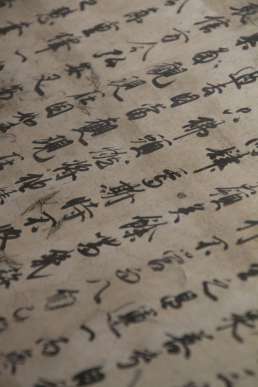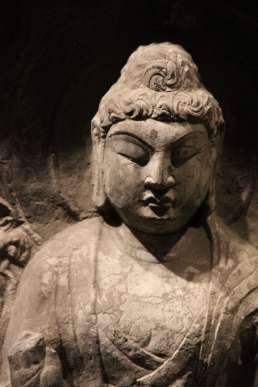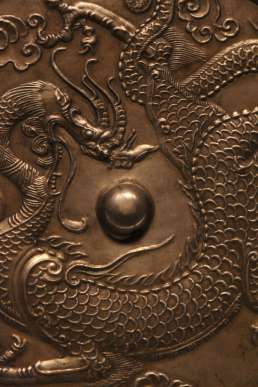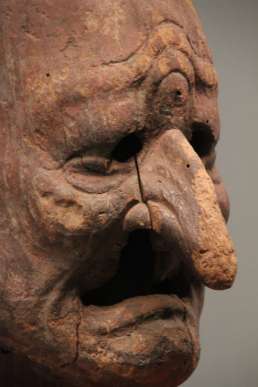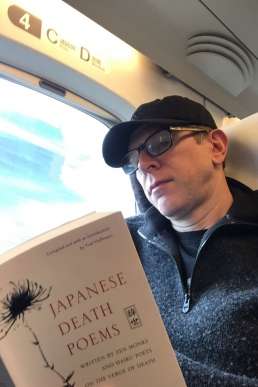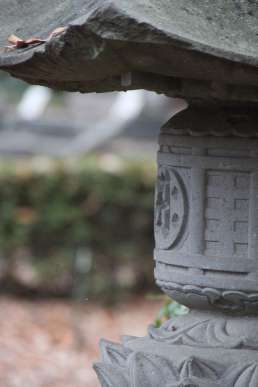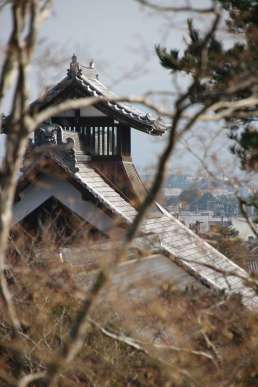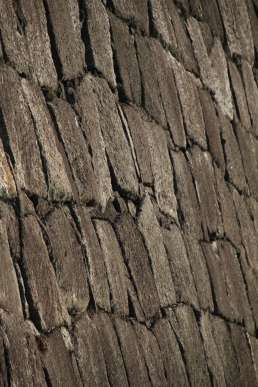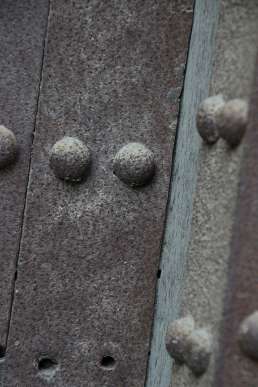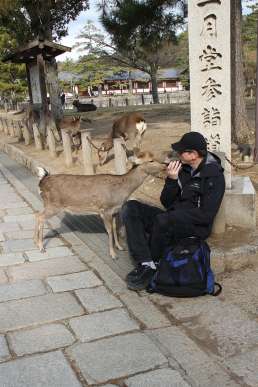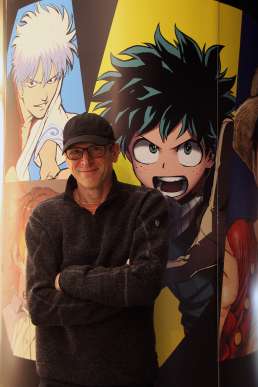Is there an upside to writer’s block? Yup. It’s the excuse every songwriter needs to take a nice, long trip. Call it “research & development” on your taxes.
This time, I followed my muse – or, maybe ‘kami’ – to Honshu, the big island of Japan.
It’s a shame I’m not a chef, because if there were nothing else to hotfoot a dozing songwriter in Japan – and I assure you, there’s plenty – the food is a non-stop blowminder. The variety and nuance of dishes is consistently amazing, with chefs in every region dedicating their lives to local specialties – from Osaka’s takoyaki (octopus balls – but not what you’re thinking) to Kyoto’s kaseiki (haute cuisine).
No, I’m not going to write a deep, probing song about sushi (or octopus balls) – for starters, it’s been done to death – but I am certainly inspired by those who dedicate their lives to creating the ‘perfect’ udon noodle. Such commitment is commonplace in Japan, regardless of vocation. I’d like to know what drives it because, for one thing, I’m not patient enough to bake bread. For another, such insight could inspire a Nobel Prize-winning lyric.
Tokyo
My quest for songwriting discovery began with a touch-down in Japan’s capital and, animated by jet lag, a crisp pre-dawn jog around Shinjuku Central Park, and an unanticipated perk: Chinese t’ai chi with the locals. Sweet.
Even at this ungodly hour, with shops closed and streets empty, and sun sorta unrisen (ironically), I noticed something: Tokyo embraces the old and new like no other city, with equal respect paid to Shinto temples and Transformers; to feudal samurai warriors and their modern manga equivalents. It’s everywhere and it’s bold – clearly, a point of pride.
My song brain loves this contrast. I like a dark lyric – a story of emotional desperation or of humanity’s defects. [We have a few, in case you haven’t noticed.] But then, I also enjoy a bit of pop culture. Put ’em together and you end up writing goth tracks, sipping tea in Shibuya’s super-hip Harajuku district. In other words, I’m not alone in my chic depression. I could live here.
Tokyo National Museum
For inspiration from the past, my wife and I dove into the Tokyo National Museum, with its many galleries – Honkan, Heiseikan, Toyokan, and Horyuii. [There may be others but we ran out of daylight – and the promise of binge-eating was ever-present.] Needless to say, each of the galleries is magnificent.
Photography is welcome (without tripods), so I runned-and-gunned with my trusty Canon 7D and Tamron 18-270 lens, collecting hundreds of photos destined for album covers. Beautiful kanji scrolls. Close-ups of embroidery on kimonos and samurai armor. Endless sculptures. Ornate treasures. Of course, the lighting is perfect too, so any fool can shoot a National Geographic-quality picture here. Even this fool.
Actually, let me dial that back a bit: In one or two of the exhibits, the lighting is too dim for f/3.5. A prime lens, or even a monopod (presuming it won’t get you in trouble with the museum law) will help.
Tragically, I forgot to take pictures of the museum labels. Hopefully, I will remember just enough of the history and folklore behind these works before my muse takes a hike. And maybe Google’s reverse image search can help me recover the missing backstories.
Meiji Jingu
Shinto is Japan’s native religion – a nature religion – and one I have come to admire. Without a central authority, it is very tolerant and, consequently, many Japanese practice Shinto in combination with other religions.
A tenet of Shinto is harae (“purity”) and the avoidance of kegare (“impurity”). It explains Japan’s reverence for cleanliness and is evident everywhere. Seriously, the entire island is spotless. It also explains the country’s elaborate bathing rituals and sites. It is why you will be asked to remove your shoes before entering certain buildings, to use mats in the gym (on a floor that most of us would feel comfortable licking), and to hang your backpack up off the ground. [Yours truly was ever-so-delicately chastised for this indiscretion. Perhaps the café waiter didn’t want my begrimed backpack soiling his immaculate floor.]
Tokyo’s Meiji Jingu is a Shinto shrine dedicated to the deified spirits of Emperor Meiji and his wife, Empress Shoken. It is surrounded by 170 acres of beautiful evergreen forest and provides the ideal environment to pen a transcendent punk rock song. Or two. At least, that’s what I was hoping for. In reality the site is a bit busy – peaceful, but busy – and without many opportunities to sit, perhaps by design. Consequently, my songwriting notebook never emerged.
And that’s a good thing, it turns out. Charmed by the place, I purchased a tiny booklet, the Japanese equivalent of “Shinto for Dummies,” and discovered a deeper understanding of Japan – an understanding that would ultimately enhance the entire trip. As such, I recommend the same to anyone visiting Japan.
I also prayed at the temple, “Please help me write a hit song.” “Oh, and please make my family stop laughing at me.” Can’t hurt.
Trainspotting
A word of warning: Tokyo’s subway stations are a bit confusing. And, by “a bit,” I mean to say, if you’ve never cried in public before, this is your chance.
At any given station, travelers may encounter multiple levels, serving multiple train lines, all owned and operated by separate companies. Some maps will show you all the lines and stations you’ll need to get from A to B (Adachi to Bunkyō). Others won’t. Even with English translations, it’s just too easy to get lost, or worse, on the wrong train. Or, my favorite, on the right train but going in the wrong direction. And, to be absolutely clear, knowing the color and number of your desired platform – you’d better – doesn’t mean you’ll find it easily among the endless tunnels. Not without help. And/or tears.
The trick? Always use the manned turnstiles. Without even stopping, flash ’em your rail pass and say or point to the desired platform on your map (e.g., “M 08”). Without a word, the folks in the dapper blue suits will point you in the right direction – usually, where you just came from – and make you look like the hero you are.
Alternately, you can ignore my advice and duck to the sides for cover – or you’ll be trampled to death – and stare at your map. Forever. Both options will challenge the headstrong traveler, but one gets you to the show on time while the other creates self-worth issues that’ll outlive you. And tears.
Kyoto
Our next destination was Kyoto, Japan’s former capital and, ironically, an anagram – in English, anyways – of “Tokyo.” File this under “stupid trivia” if you like, but now you’ll never forget the “former capital of Japan.” Ever. You can thank me when you win on Jeopardy. Or, more likely, quiz bowl. Or, if we’re being completely honest with ourselves, bar trivia.
But first, more trains. I know. “Yes!”
Our trip to Kyoto begins with a ride on the shinkansen (bullet train). Japan’s high-speed rail is a marvelous contradiction – quiet, sophisticated elegance at mind-numbing speeds. With three hours from Tokyo to Kyoto (again, anagrams), it presented an ideal opportunity to write or, in my case, read up on “Japanese Death Poems,” a book I picked up at the Tokyo National Museum’s gift shop. Between chapters, I ogled at our speed on my iPhone while noshing on pickled tentacles and other delicious oddities hidden in the food trolly’s bento boxes.
The aforementioned book begins with a thorough history of Japanese poetry, from the traditional waka, to the popular haiku. I am particularly fascinated by the latter. If poetry is the language of the ineffable, then haiku speaks it with astounding efficiency – commonly, in just seventeen syllables. Imagine if you could rewrite John Lennon’s, uh, “Imagine,” in just seventeen syllables, without losing any of its impact. This is the spirit of haiku.
While I may be a relative Japanese poetry newb, haiku seems oddly familiar. You see, boiling complex ideas down to their essence (a la the Feynman Technique) has been an obsessive-compulsive habit of mine since childhood, when Dungeons & Dragons revealed that the physical universe can be reduced to a few simple die rolls. [“Roll 14 or better to jump the fiery crevasse! Minus two cuz you’re wearing full plate armor, moron.”]
It also resembles the process of penning a chorus, where a catchy phrase is all you’re allowed (by law) to drive home the ideas/emotions introduced in the verses. Never done it before? Try this: Think back to your first heartbreak – the one that ruined you. Now, share that feeling with the rest of the class. You are allowed three words. Go.
Then again, if writer’s block is your only creative obstacle, then this advice might not benefit you, but I’m guessing many songwriters can relate. Or, maybe should.
Don’t get me wrong. Rock operas are nice (and almost always better than regular ones), but when exploring dark, difficult subjects (an obligation of maladjusted songwriters everywhere), a concise message is perhaps the better option. If you want to reach your listeners, that is. Otherwise, carry on with the Canterbury ‘blah, blah, blah.’
Here’s an example of superb haiku poetry, by master haiku poet, Kobayashi Iss:
A world of dew • And within every dewdrop • A world of struggle
Sublime.
Kyoto. Really, This Time.
Ah, but we’ve arrived. Welcome to Kyoto….
Kyoto offers traditional Japanese culture without the infusion of J-pop, Pokémon and gothic Lolitas. Truth be told, I was hoping to find quiet inspiration in Kyoto’s temples and Zen gardens but once again, found the popularity of those sites a bit too distracting for serious creative work. Or, I simply lack concentration. Yeah, that’s at least part of it. Probably most of it.
But I’m not complaining. Our hikes through the countless orange torii gates at Fushimi Inari shrine and the heavenly landscapes and bamboo forests of Arashiyama Park were priceless. And, yes, inspiring.
Osaka
By now, I’m just leaving my songwriting notebook in the hotel. Fukkit.
Osaka feels like Tokyo, but with some London attitude. This is not the place to walk against the flow or change directions suddenly – you will cause an incident and somebody will happily call you an asshole. No, I don’t speak Japanese slang, but it doesn’t matter. “Asshole” – technically, yuso-karoo (“shit-guy”) – is universally understood in any language. When you hear it from any mouth aimed at your face, you just know. It’s right up there with “I’m gonna punch you in the dick” and “Are you looking for a girlfriend?” Cue universal look of shock.
I thoroughly enjoyed our visit to Osaka. It was the most ‘immersive’ of our destinations. We braved the human river at Dotonbori to sample all sorts of crazy-delicious street food, hung out in Nara’s Todai-ji temple with some over-friendly deer, and learned shuji (calligraphy) in a random sumi-e supply shop. But, for myself, the highlight was trading skills with some local skateboarders outside the train station. Back home, I’d be shunned by the local skate rats (and perhaps reported to the authorities), but these teens genuinely enjoyed cheering on a middle-aged American throwing down old-school tricks. Thanks, guys.
Tokyo Again
Before leaving Japan, we returned to Tokyo for three more days of songwriting tourism – this time, aiming our eyeballs at the city’s colorful pop culture.
Among the highlights was a visit to Akihabara, Tokyo’s “Electric Town,” where you can buy diodes from street vendors as you would vegetables from a farmer’s market. Stores, several stories high, overflowing with Gundam models. And neon, talking advertisements for toilet seats that do everything for you. And I mean everything.
We also enjoyed a trip to the Ghibli Museum in Mitaka. Fans of anime director, Hayao Miyazaki (‘Castle In the Sky,’ ‘My Neighbor, Totoro’) will appreciate this. Fans of solitude won’t. This is the single most crowded place in Japan, I’m pretty sure. But, courtesy and patience are venerated virtues in Japan, so even an agoraphobe like myself can enjoy the experience without losing his wits. In fact, I’m probably better for it. If that’s possible.
We also enjoyed a romp through teamLab Borderless on Tokyo’s artificial Odaiba island. This massive installation art exhibit is an absolute kick. It’s crowded and confusing and huge, spanning two floors and 10,000 square meters – you’ll be exhausted by the time you leave. For performing artists, it’s also a non-stop photo op. Seriously, if you need some quality photos for your press kit but haven’t the budget, there’s no better place to fake some “world tour” shots. The dense mixture of animated digital artwork and extravagant lighting will have promoters thinking you opened for the Weeknd at Madison Square Garden. Oh, and did I mention it’s crowded? By now, I’m numb to it. Sorta. Sorta not.
Just down the street from teamLab Borderless, we stumbled onto – or rather, under – a full-scale, 60-foot-tall Unicorn Gundam statue that appeared real enough to burst into action and crush my mortal form. And, it would be an ass-kicking well-deserved too, according to my wife. She’ll tell you I’ve had it coming for years. Something about my “jib.”
I’m leaving out a lot but, if haiku poetry is the new standard, I’ve already said too much.
Needless to say, Japan is one of my favorite destinations, even if the urban crowds aren’t conducive to cerebral songwriting. So, take good notes. Pictures. But don’t get bogged down. Keep your head up and enjoy the experience. There’ll be time to commune with your muse on the bullet train. Or, when you get home.

